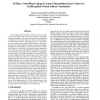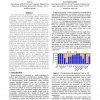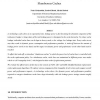46 search results - page 3 / 10 » Drowsy Caches: Simple Techniques for Reducing Leakage Power |
117
click to vote
ICCD
2007
IEEE
15 years 3 months ago
2007
IEEE
The emerging trend of larger number of cores or processors on a single chip in the server, desktop, and mobile notebook platforms necessarily demands larger amount of on-chip last...
100
click to vote
IPCCC
2006
IEEE
15 years 5 months ago
2006
IEEE
Low power has been considered as an important issue in instruction cache (I-cache) designs. Several studies have shown that the I-cache can be tuned to reduce power. These techniq...
ICCD
2008
IEEE
15 years 8 months ago
2008
IEEE
— Recent studies indicate that a considerable amount of an L2 cache leakage power is dissipated in its peripheral circuits, e.g., decoders, word-lines and I/O drivers. In additio...
112
click to vote
CF
2005
ACM
15 years 1 months ago
2005
ACM
As technology scales down at an exponential rate, leakage power is fast becoming the dominant component of the total power budget. A large share of the total leakage power is diss...
ICCD
2007
IEEE
15 years 6 months ago
2007
IEEE
Leakage power has grown significantly and is a major challenge in microprocessor design. Leakage is the dominant power component in second-level (L2) caches. This paper presents t...



